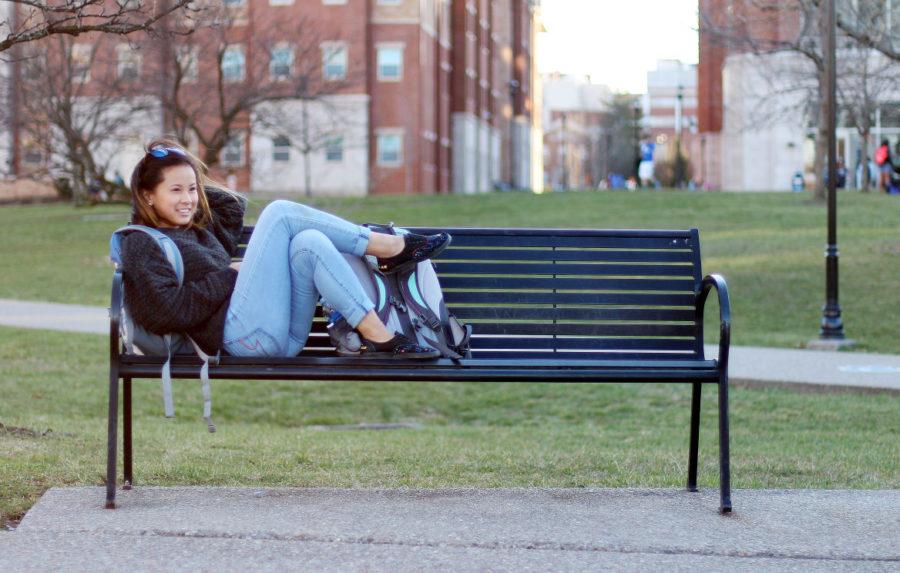Over-accepting practices at universities more than just a technical error
Student relaxing on a bench outside of the William T. Young library at the University of Kentucky in Lexington, Ky. on Tuesday, March 8, 2016. Photo by Josh Mott | Staff.
August 30, 2017
Falling enrollment has become a huge threat to the college system, so it’s natural for schools to do whatever it takes to keep numbers high. But what happens when that means over-accepting students – only to find that too many students accepted that school back?
At the University of California in Irvine, nearly 850 more students than expected had accepted the school’s offer of admission, resulting in almost 500 of those acceptances being rescinded two months before the semester started. The school rescinded those acceptances based on small technical errors like late transcripts that would normally only cost a student their first choice of dorms.
Housing shortages are the main concern when it comes to over-enrollment. Some schools rent out hotels or apartments to accommodate students while others simply pile three students into a two-person dorm.
Over-filled classes are sometimes resolved by deferring acceptance to a community college where students can transfer back to the university later. Spring acceptance – where students wait until the spring semester to begin classes – and study abroad incentives are also used to alleviate admissions errors, although many programs tend to favor those who can pay for them.
Over-enrollment becomes a problem when it unnecessarily puts stress on graduating seniors who thought their future was taken care of. Some have backup college options, some don’t. Even if everything does work out, colleges have just as much responsibility as the students to uphold their end of the admissions bargain.
To read the full article by The Chronicle of Higher Education, click here.
































































































































































